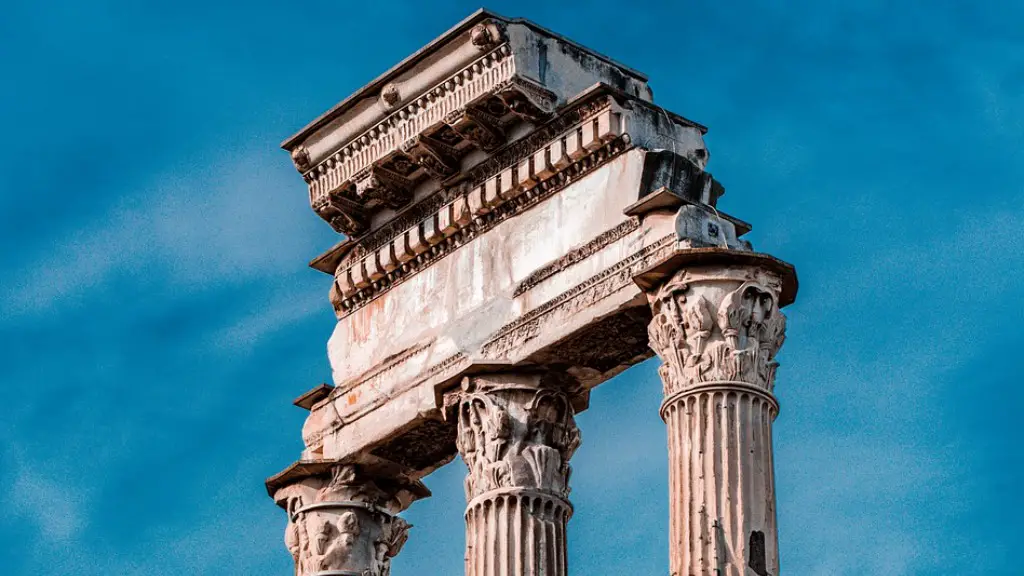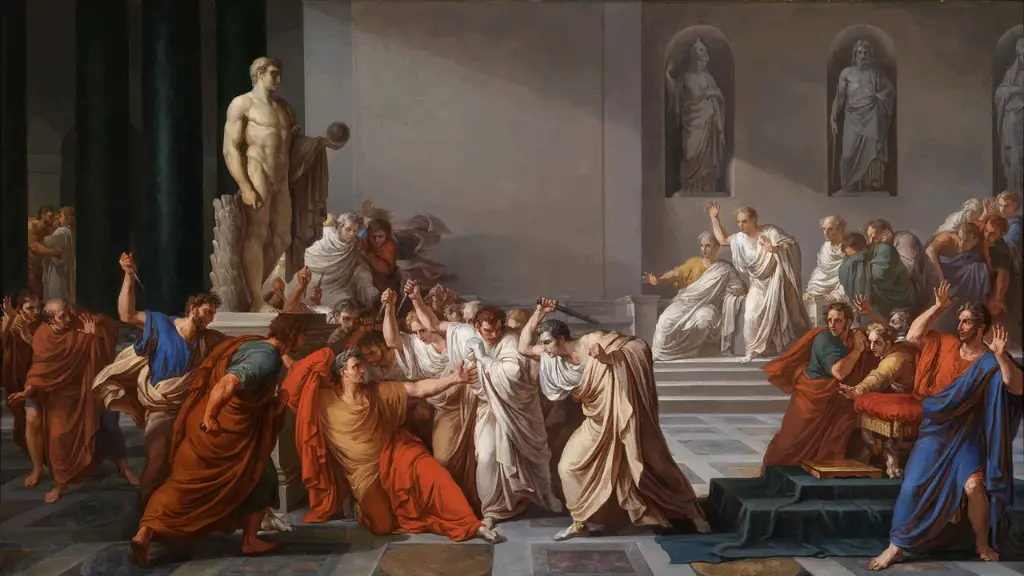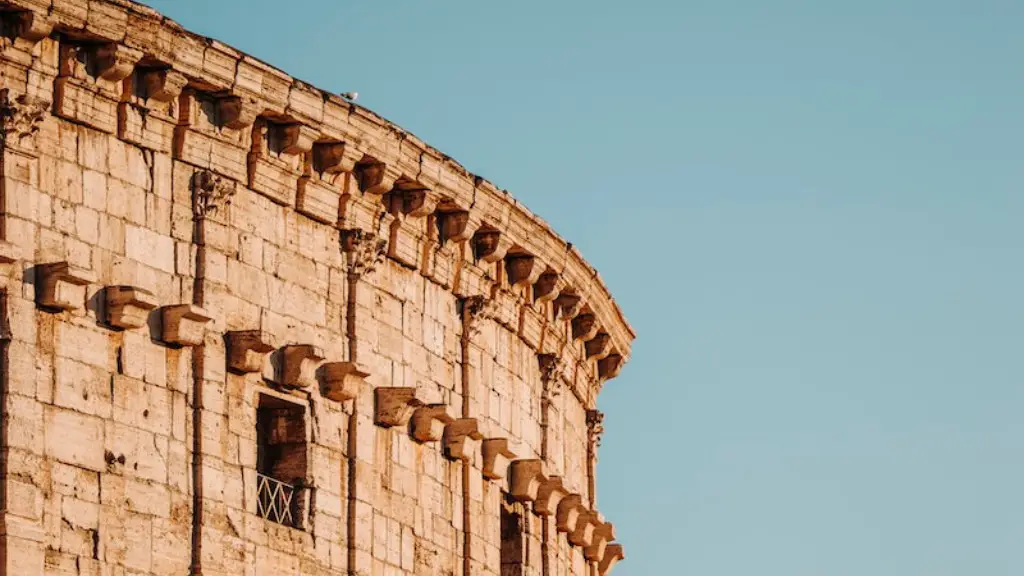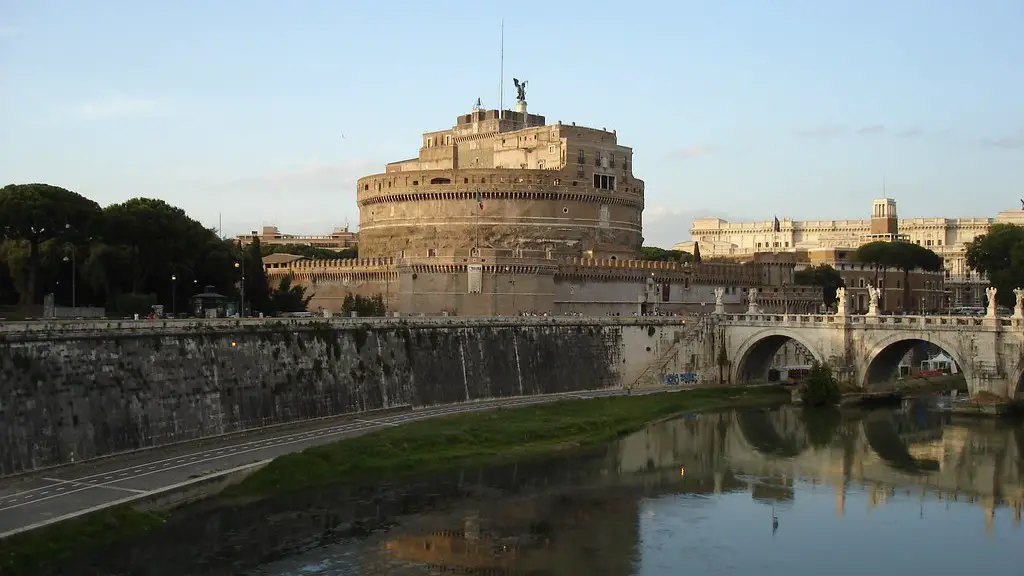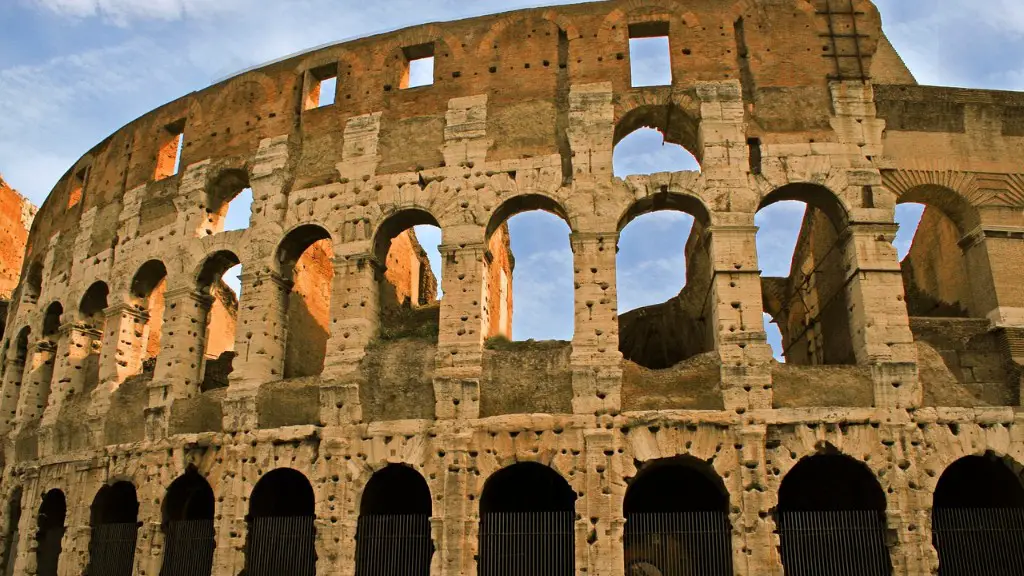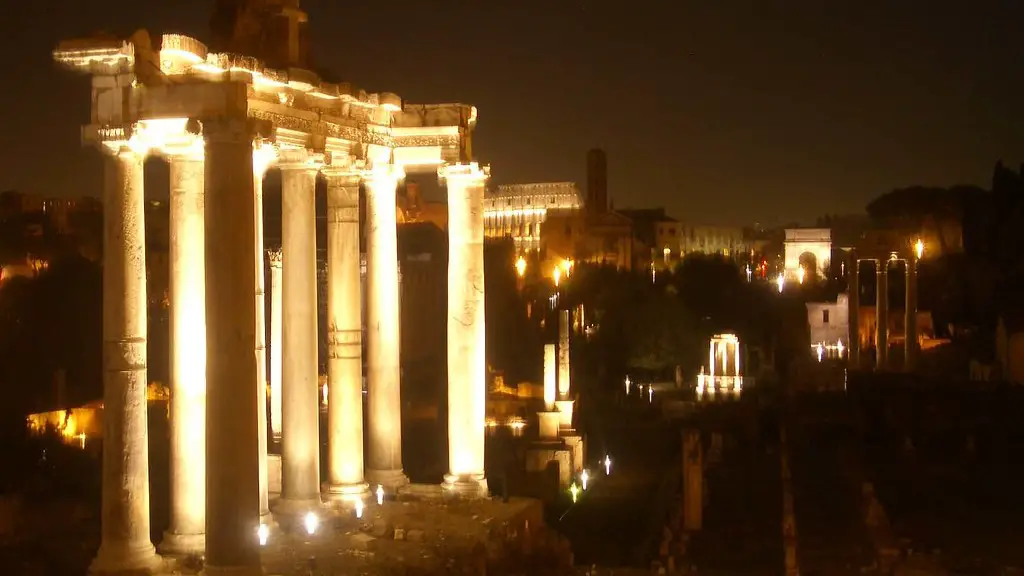Ancient Rome and its Tiber River have a long, intertwined history. The Tiber, Latin for Father Tiberinus, was an important waterway for the growth and decline of the Roman Empire. It served as a major trade and communication route, particularly during the Republic and Imperial periods. The river played a significant role in Rome’s legendary development, with its stunning historical and cultural attractions still drawing visitors today.
The Tiber River has been a centerpiece of Rome since its founding in 753 BCE. At the time, the Tiber was wide, shallow, and highly navigable, which enabled the Romans to establish trading colonies up and down the banks of the river. It was an important means of transportation for agricultural goods and resources brought into Rome, and eventually provided access to the city’s growing port of Ostia. The river’s strategic location also helped Rome become a major power in the Italian peninsula.
In the early Roman Republic, the Tiber served as a major commercial route. However, it became increasingly important as an instrument of war in the late republic and early empire. The ability to transport troops, equipment, and supplies up and down the river enabled the Romans to launch military campaigns against their neighbors. The river also provided a natural barrier that helped protect the city from invasion.
For centuries, the Tiber was used to supply water to Roman aqueducts, many of which are still in place today. The river was even used to supply the public baths that were a key part of Roman life. While the river was home to many Romans, it also hosted a variety of dangerous creatures including crocodiles, snakes, and other predators. As a result, bridges were built over the Tiber to protect people from potential danger.
The Tiber served as an important source of food for Rome as well. The local fish population provided a source of nourishment for Roman citizens, who also harvested plants and spices from the river’s banks. The island in the middle of the river- Isola Tiberina- was seen as a shrine to Aesculapius, the god of healing. People from all over the Roman Empire would visit the island to seek healing.
Today, the Tiber remains a vital presence in the Eternal City. While it has changed in many ways through the years, it still plays a key role in Rome’s culture and continues to captivate visitors. Tourists and locals alike often take boat tours of the river, and its banks are filled with an abundance of activities and attractions, from parks and gardens to restaurants and nightlife.
Architecture
Throughout its history, the Tiber River has played a major role in shaping the Roman landscape. The riverbanks are lined with some of the world’s most iconic structures, including the Castel Sant’Angelo, the Spanish Steps, and Piazza Navona. In addition, Rome’s iconic bridges, such as the Ponte San Angelo and the Ponte Rotto, provide stunning views of the historic city.
The bridges, which were built by the ancient Romans and Italians, have been the site of many famous events and battles, including the famous Battle of the Milvian Bridge. The bridges were also strategically placed to ensure that soldiers could move freely throughout the city, while also providing a means of escape if needed.
The Tiber River is also home to some of Rome’s oldest and most beloved monuments. The Circus Maximus, which was built along the banks of the river, was the site of ancient chariot races and other sporting events. The ancient Temple of Portunus, which is located on the Tiber’s east bank, was built to honor the god of harbours. Both are stunning examples of Roman architecture that can still be seen today.
Featured Landmarks
The Tiber River runs through the very heart of Rome, making it the perfect place to take in some of the city’s most iconic sights. Along the banks of the river are some of Rome’s most famous landmarks, including the Column of Marcus Aurelius and the Pantheon. Both of these structures are testaments to the legacy of the Roman Empire.
The Tiber is also home to some of the world’s most important museums and galleries. The Vatican Museums, located on the river’s west bank, house some of the world’s greatest collections of Renaissance and Baroque art. Additionally, the Capitoline Museums, which feature sculptures, paintings, and other artifacts from Antiquity, are located along the river.
Rome is also home to one of the Seven Wonders of the World—the Colosseum. This colossal amphitheater, which is located near the banks of the Tiber, was the site of grand spectacles, such as gladiator battles and ancient dramas. It is also the oldest and largest amphitheater in the world.
Boat Tours
In recent years, the Tiber River has become a popular destination for boat tours. Tour boats offer panoramic views of the city and provide a unique way to take in the sights and sounds of Rome. The boats often pass under some of Rome’s most iconic bridges, including the Ponte Sant’Angelo and the Ponte Rotto.
The boats also provide an up-close look at some of the city’s stunning river-side landmarks, such as the Spanish Steps and the historic Isola Tiberina. Some boats even offer dinner cruises, providing an unforgettable way to experience the city’s unique culture and vibrant nightlife.
Tiber River Banks
Rome’s banks of the Tiber River are vibrant and bustling. The waterfront is lined with parks, gardens, and refreshing expanses of green space, which provide respite to visitors and locals alike. The river is also home to some of the world’s finest restaurants, cafes, and bars, making it the perfect place to spend a leisurely afternoon or cozy evening.
The Tiber River and its banks also provide a glimpse into the rich history of Rome. Throughout its long history, the river has witnessed countless battles, hosted countless guests, and inspired countless visitors. As a result, the river and its banks offer a unique perspective on the rise and fall of the Roman Empire, as well as offering insight into Rome’s modern culture.
Economic Importance
The Tiber River has had a profound impact on the economic growth of Rome. In addition to enabling the city to establish trading colonies and launching military campaigns, the river has provided an essential lifeline to Rome’s modern economy. The river has helped to fuel the city’s thriving tourism industry and has been a catalyst for the development of new businesses and employment opportunities.
The Tiber River is also a source of hydropower, which is used to provide electricity to the city. In addition, the river serves as a source of drinking water and is used by farmers to irrigate their crops. The river is an invaluable resource for the city’s economy and provides many of the benefits that make Rome such a unique and vibrant place to live.
Environmental Impact
In recent years, the Tiber River has seen an increased focus on conservation efforts. The river is home to a plethora of wildlife, including birds, fish, and plants, and efforts are being made to protect these important species. Additionally, organizations have begun to clean the river and remove any pollutants that have been introduced by human activity.
In addition, many of Rome’s iconic landmarks have begun to incorporate sustainable practices into their operations. For example, some hotels have adopted energy efficient lighting systems and are using renewable energy sources, such as solar and wind power. Rome is committed to protecting its environment and the Tiber River is a key part of that effort.
Conclusion
The Tiber River has had a tremendous impact on the history of Rome. From its role in the growth and fall of the Roman Empire to its key role in modern life, the Tiber is an integral part of the city. Its banks provide a unique look at Rome’s past and present and offer an abundance of activities and attractions for both visitors and locals to enjoy.
